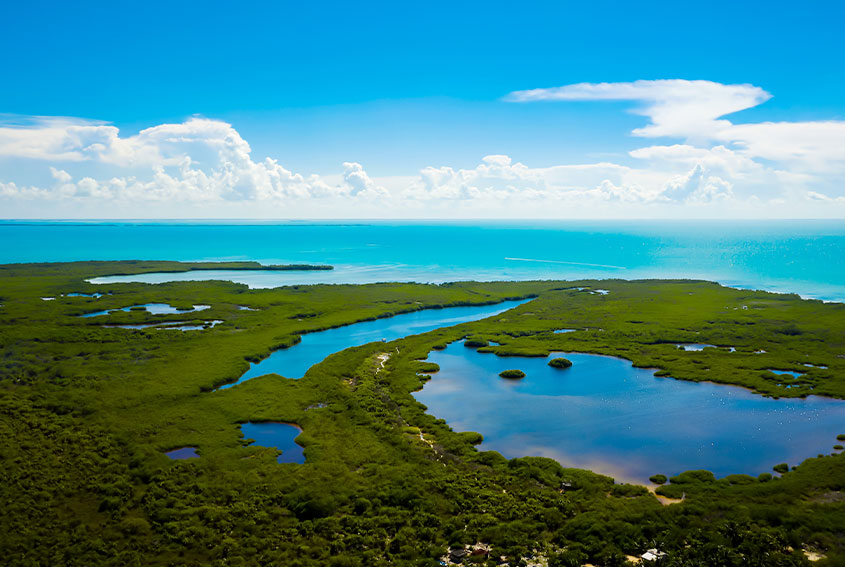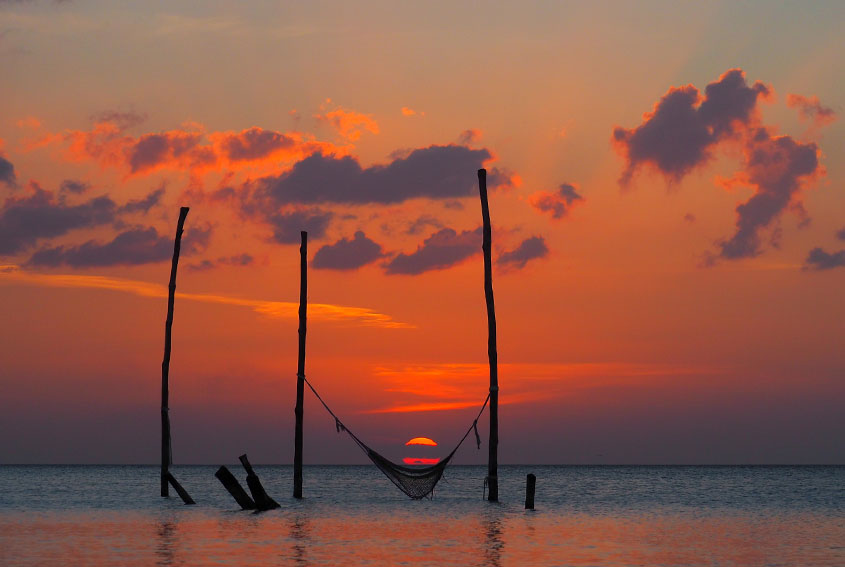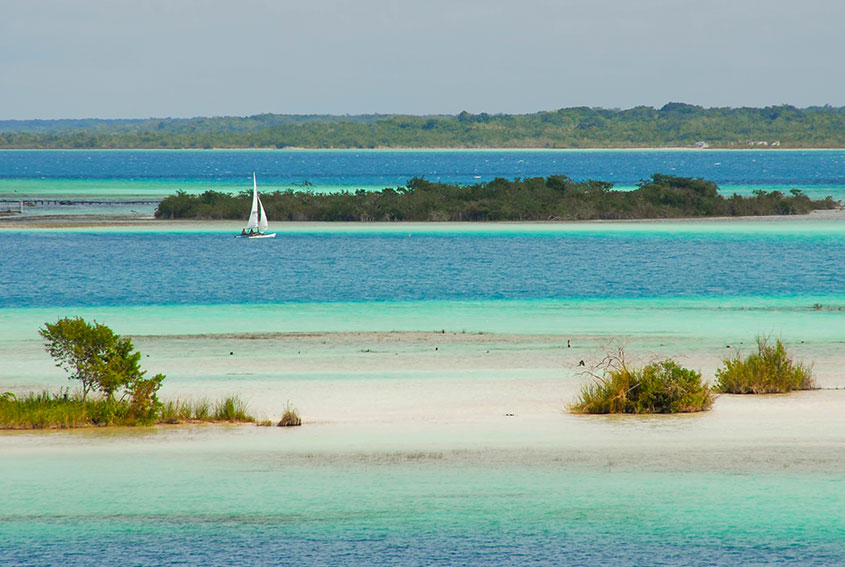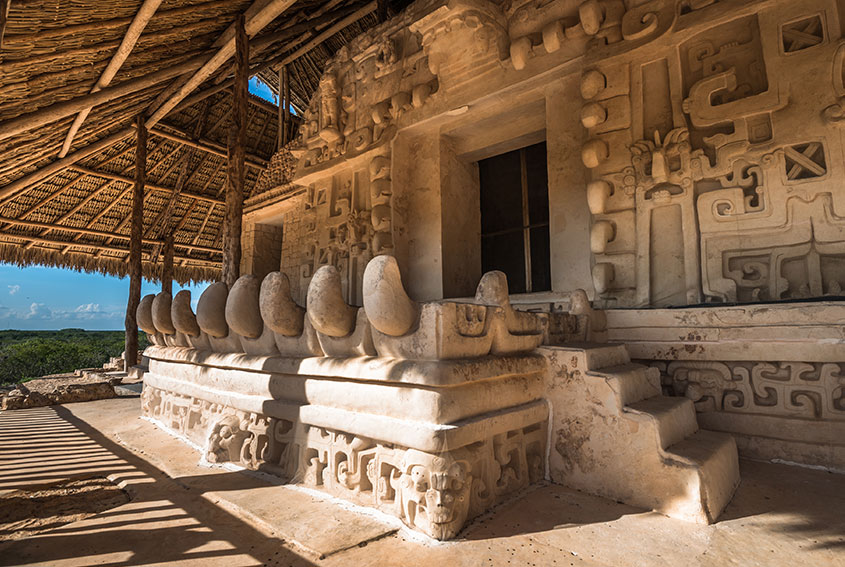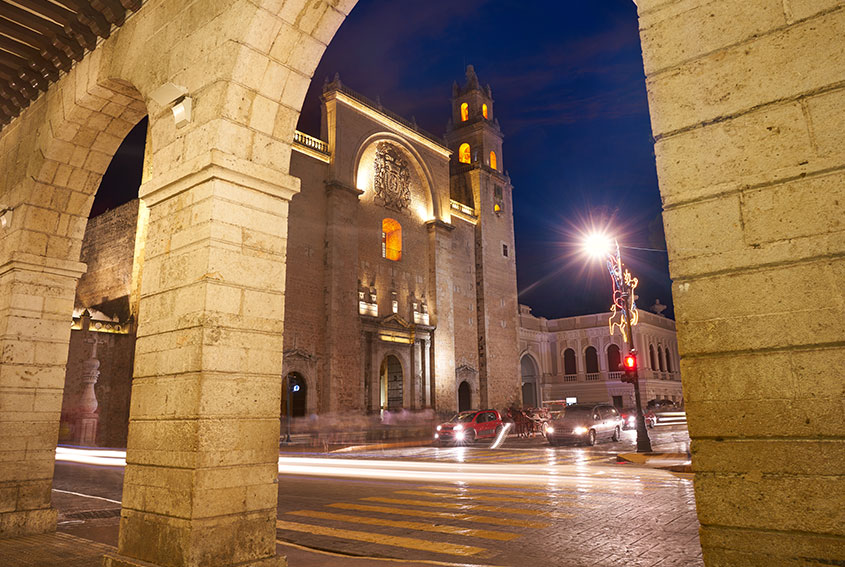New Trips for the New Year
Make this year’s vacation one of new discoveries and incredible travel experiences. The Yucatán Peninsula is full of wonders, from reserves teeming with wildlife, islands, beaches and spectacular turquoise lagoons to ancient Maya temples and cities full of culture and history.
Sian Ka’an
One of Mexico’s largest biosphere reserves, Sian Ka’an straddles a vast swathe of jungle and wetlands in northern and central Quintana Roo. In addition to tropical forest, mangroves and coastal lagoons, it also protects underground rivers and cenotes, Caribbean beaches and the coral world of the Mesoamerican Reef. It is home to the jaguar, puma and ocelot, spider and howler monkeys, manatee, crocodile and over 350 species of bird.
In Maya, Sian Ka’an means “where the sky is born” and its landscapes of water and sky become one. To explore the reserve, you can take a tour from Muyil, visiting the archaeological site of the same name and boarding a boat that will take you through the lagoons and along a canal in the mangroves that was dredged and widened for Mayan trading canoes more than 1,000 years ago. Another option is to take the bumpy coast road south from Tulum to Boca Paila and continue to the fishing community of Punta Allen on the shores of Bahía de la Asunción. The bird watching, fishing and diving trips and nature walks you can take from the bayfront village make the long drive and potholes worth it.
Holbox
If you haven’t visited Holbox, Quintana Roo’s Gulf coast island, plan a visit in 2023. A short ferry ride from Chiquila takes you across the Yalahau Lagoon to the fishing village of sandy streets, wooden houses and palapas and colorful murals showing whale sharks, flamingos and turtles.
Head north from the dock and in minutes you’ll be on the white beach gazing at the blue-green waters of the Gulf of Mexico and a line of thatched palapa hotels, beach bars and seafood restaurants. This is a place for long beach walks, boat trips in search of flamingos, herons, and whale sharks in the summer, and for fishing. You can spend your days on the beach, relaxing in a hammock under a palm tree, sunset watching and stargazing.
Bacalar
Head south to visit one of the Mexican Caribbean’s jewels, Bacalar, the Lagoon of Seven Colors, a vision in turquoise, azure, indigo and aquamarine rimmed by jungle and mangrove forest. You can combine your trip into southern Quintana Roo with a visit to the archaeological site of Chacchoben and choose one of the rustic thatched hotels along the Bacalar shoreline as your base to go further afield and explore the Maya cities of Oxtankah, Kohunlich and Dzibanche.
Ek Balam
If you have visited the archaeological sites of Tulum, Coba and Chichen Itza and want to explore more of the Maya World, start with Ek Balam (“black jaguar or star jaguar” in Maya) in eastern Yucatan. Just 20 minutes north of the colonial city of Valladolid, this ancient city had links with Chichen Itza and Coba and its name pops up in hieroglyphic inscriptions deciphered by archaeologists working at sites in the region.
The city flourished between AD 250-1200 and had its own distinctive artistic style. Its crowning glory is the stucco façade on the upper level of the Acropolis, the principal building. Against a backdrop of masks, sacred creatures and the gaping jaws of the earth monster, ancient nobles surround a figure said to be the founder of the ruling dynasty. The figure’s ornate feathered headdress resembles wings and led local people to refer to him as “el angel” or the angel.
Merida
All roads lead to Merida and if you have never visited this historic city perhaps it is time to think about a trip. From the ancient Maya to Spanish conquistadores and settlers to the henequen barons of the late 19th century, its streets have stories to tell and on January 6, 2023, it celebrates its 481st anniversary.
The Spaniards founded their city in 1542 amidst the ruins of an ancient Maya city called T’ho and the colonial district spans several barrios or neighborhoods. Visit the main square dominated by the Cathedral, stroll north along Calle 60 with its tree-lined plazas and churches and make your way to Paseo de Montejo, Merida’s elegant boulevard lined with opulent mansions. Some are now open to the public and offer a glimpse of the wealth of the henequen era when Merida prospered from the cultivation of the native agave which came to be known as green gold in the late 19th century and the first years of the 20th century.
Museums, markets, a different cultural event every night to enjoy, neighborhoods packed with restaurants and bars and historic buildings to explore. Try Yucatecan cuisine, listen to local trova guitar serenades and shop for crafts and art. It won’t be long before you fall in love with Merida, “the white city.”
Your Concierge can help you organize trips to these destinations and many more in the Mexican Caribbean and Yucatan.

